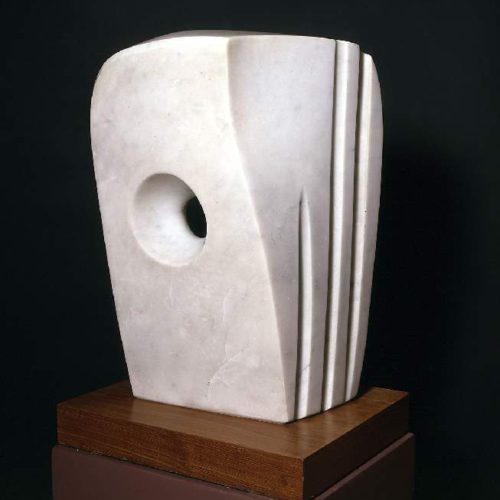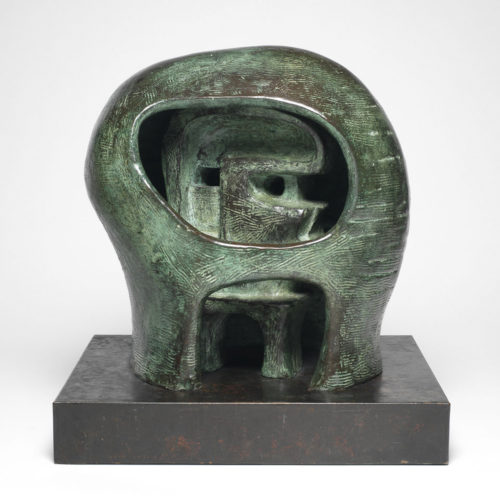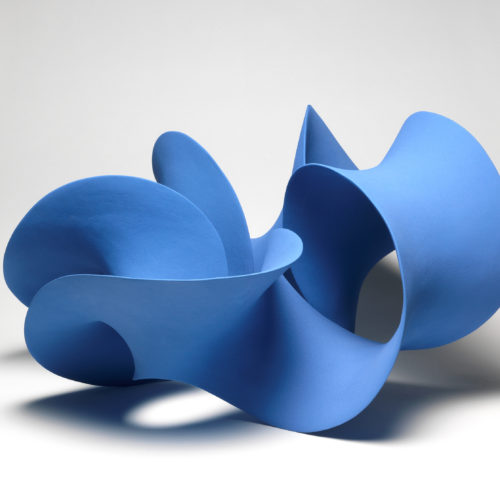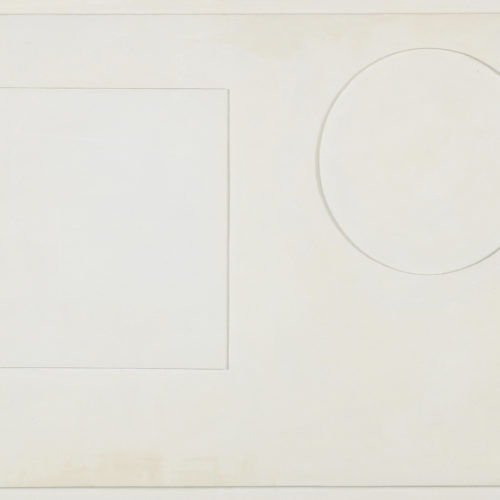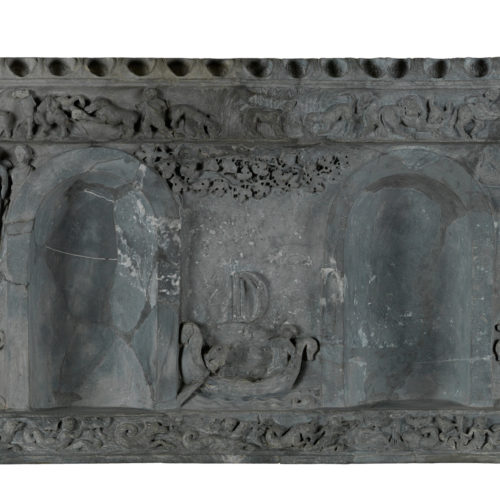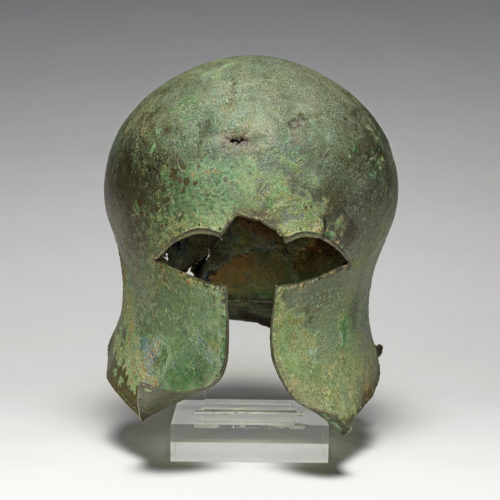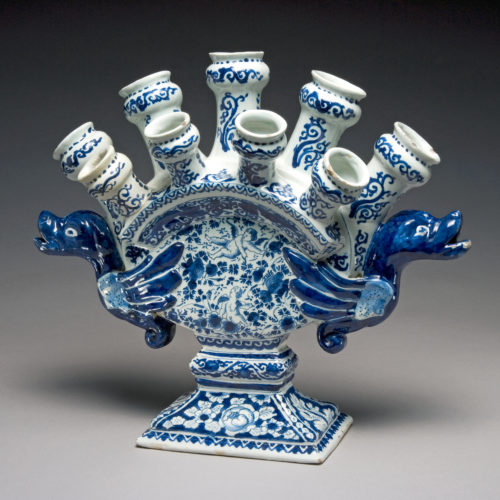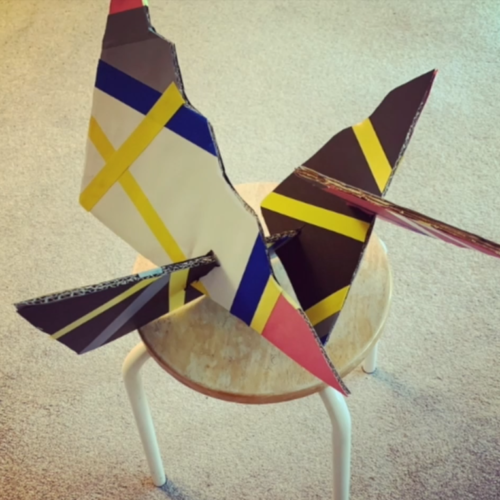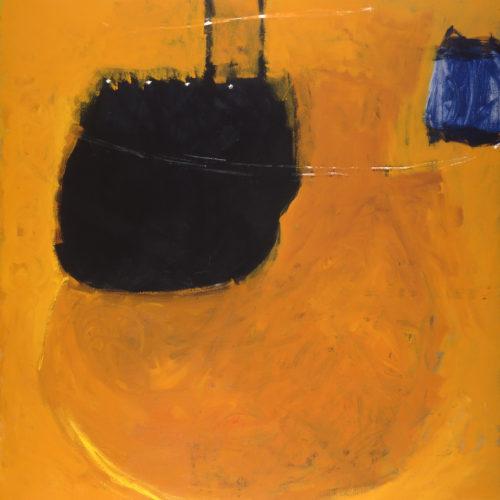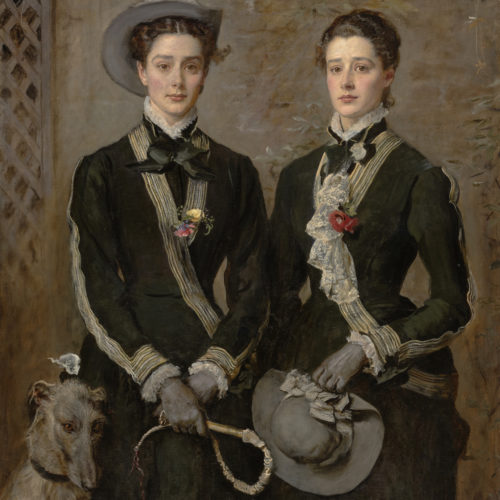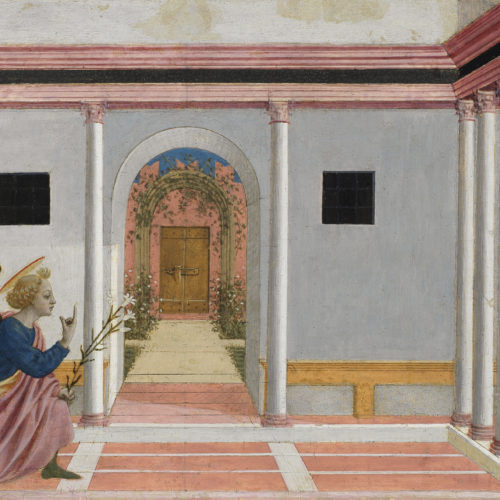Ben Nicholson, ‘1936 (White Relief), Second Version’ (1957) © Angela Verren Taunt. All rights reserved, DACS 2021
- How to interpret the ideas of artists
- Taking creative risks.
- Investigating, exploring and testing expressively.
- Visually exploiting the differences between art and design.
- Expressive knowledge of properties of materials and processes for students to select techniques and control their outcomes.
Each resource provides a set of learning materials to support these elements:
- Close Encounter: critically examine
- Discuss: think and discuss ideas
- Create: develop their own artwork through artist-led virtual workshops or ideas
- Reflect: reflect and evaluate their work
Looking at negative and positive spaces
Negative spaces are defined by seeing ‘gaps’ in the areas around the solid sculpture.
Activity suggestion: experiment by collecting together some objects and placing them closer together and further apart – this plays with the negative space. Try using objects of different textures, weights or surfaces – one might be strong and solid; the other fragile such as a balloon, or even a bubble.
Materials and processes
- Reductive or subtractive: when you take material away to create a form, for example carving and some clay processes.
- Addition: when you add materials, for example clay and wax modelling.
- Assemblage: when you combine materials (often ready-made or repurposed).
- Casting: when you create a mould of an original sculpture to make a copy. This is the process often used in bronze casting, where a sculptor models their work in clay or wax. A cast made in plaster is filled with molten bronze. Some artists also cast everyday objects.
A selection of abstract sculptures is provided in this section.
When you look at them, consider the techniques and materials mentioned above. For each item, try to identify the
- materials used
- processes used by the sculptor.
Materials used in these works include: plaster, marble, bronze, wood.
Techniques include: reductive or subtractive, addition, assemblage, casting.
Barbara Hepworth, ‘Minoan Head’
Marble on wooden base
Find out more about this sculpture here.
Image: Barbara Hepworth © Bowness; image © The Fitzwilliam Museum, Cambridge
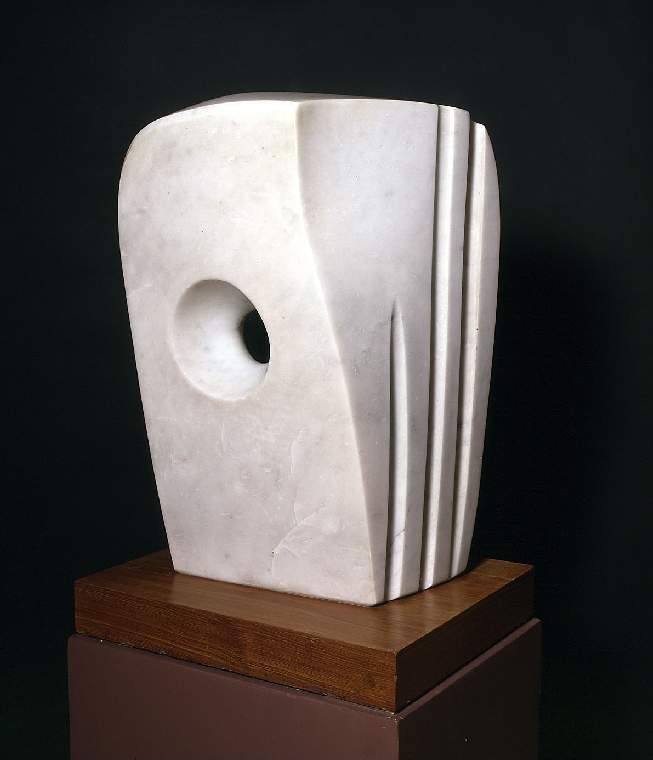
Henry Moore, ‘Helmet Head no. 3’
Bronze
Compare this Henry Moore sculpture with the ancient Greek helmet below.
Image © The Henry Moore Foundation 2020. All rights reserved; image © The Fitzwilliam Museum, Cambridge
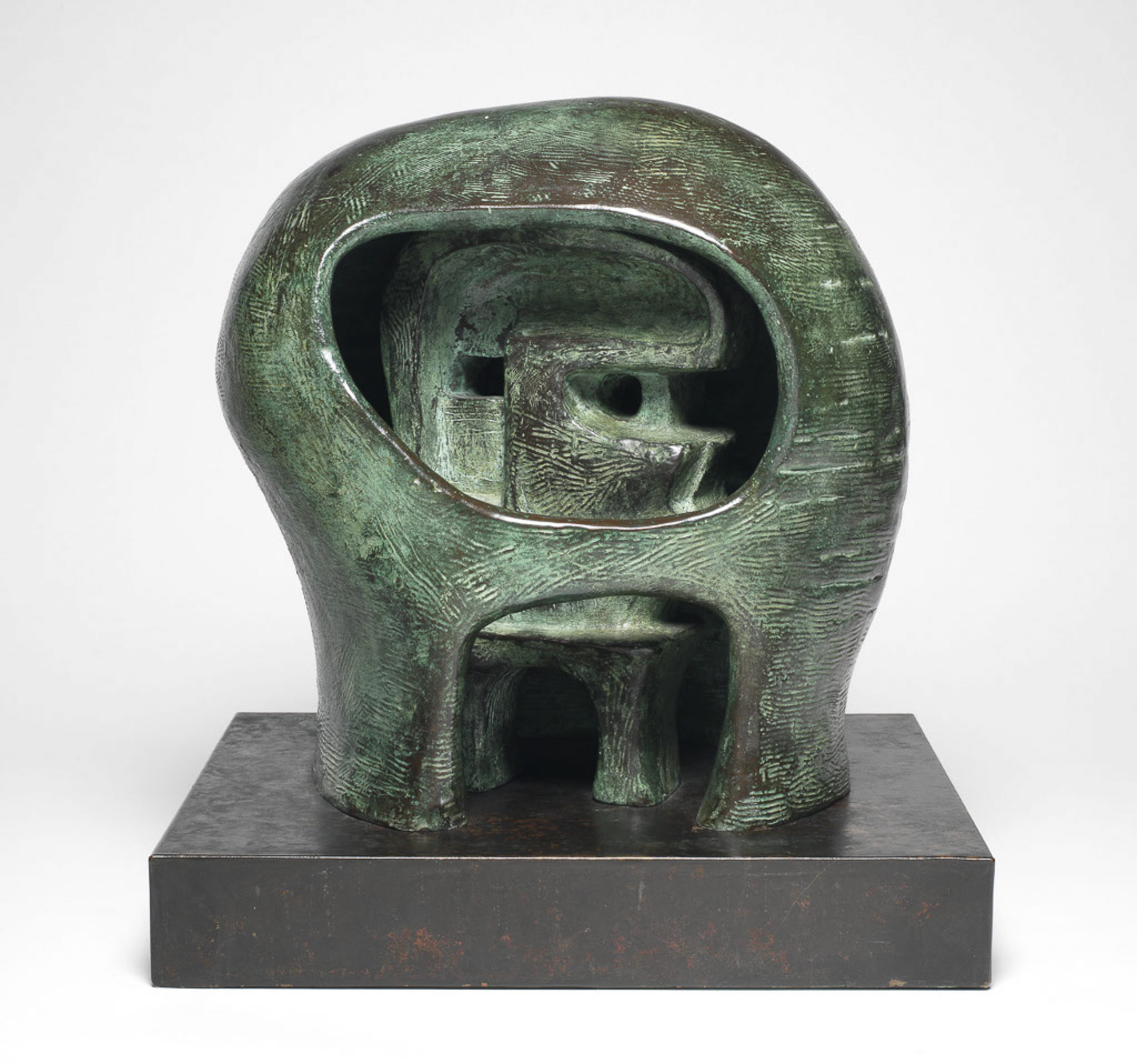
Ancient Greek ‘Corinthian style’ helmet
Bronze (copper alloy)
Henry Moore would have seen helmets like this in museums, such as this example from ancient Greece. The works he saw may well have inspired his thinking and artistic ideas. Look at this ancient helmet, which would have been worn by a solider …what is still there, and what is missing? Along with perishable parts of the helmet, the ancient Greek soldier who wore this is long since gone. We are left with this metal reminder of his life as a warrior. How has Henry Moore filled his sculptural ‘helmet’? Looking closely, what can we learn about his imagined person inside this helmet?
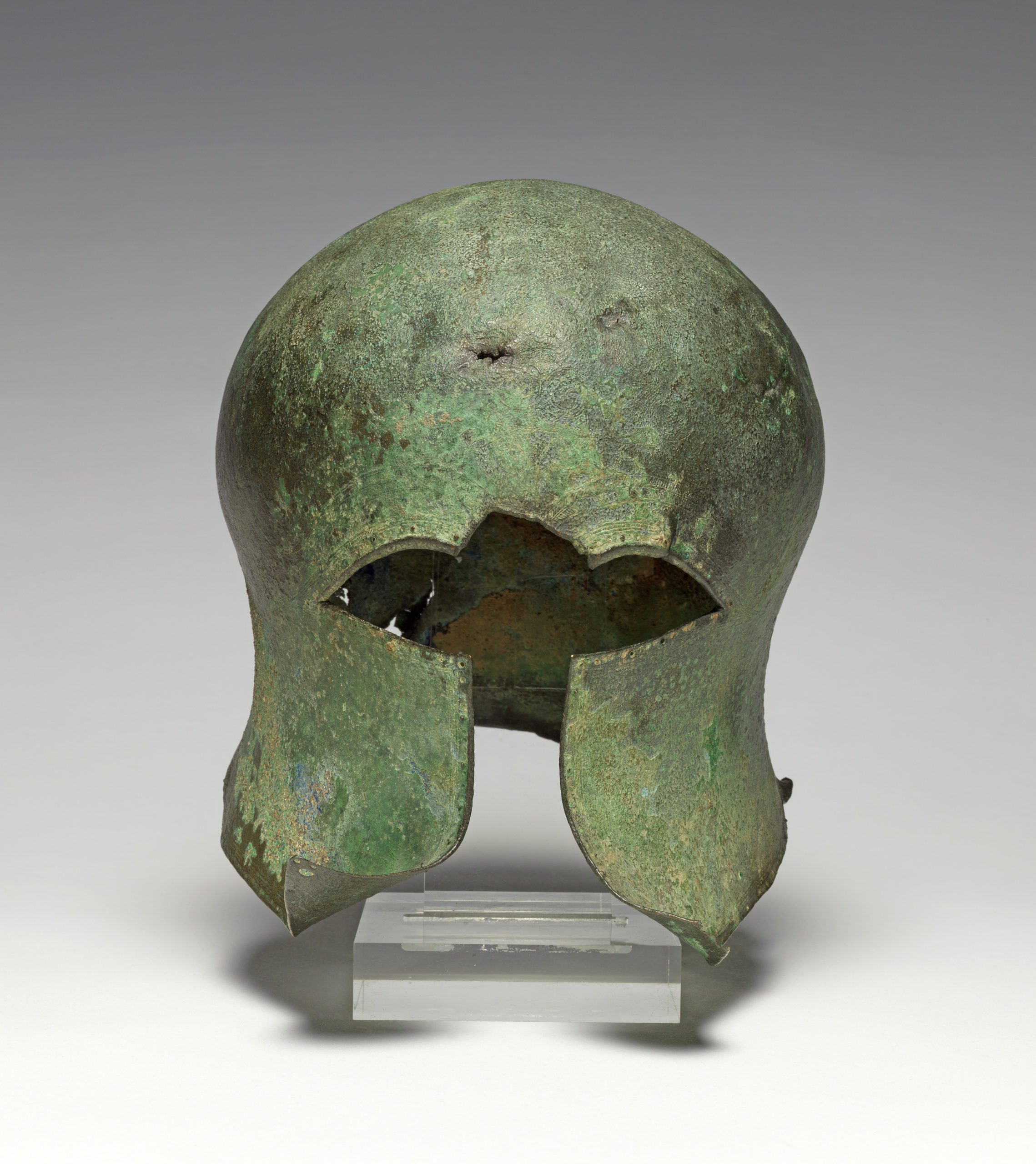
Ben Nicholson, ‘1936 (White Relief), Second Version’
Oil on carved board
Explore ‘low relief’ (shallow modelling or carving) in this artwork by artist Ben Nicholson.
Compare this Nicholson relief to the ‘low relief’ carving in the ancient Roman Lansdowne Relief below.
Image © Angela Verren Taunt. All rights reserved, DACS 2021; image © The Fitzwilliam Museum, Cambridge
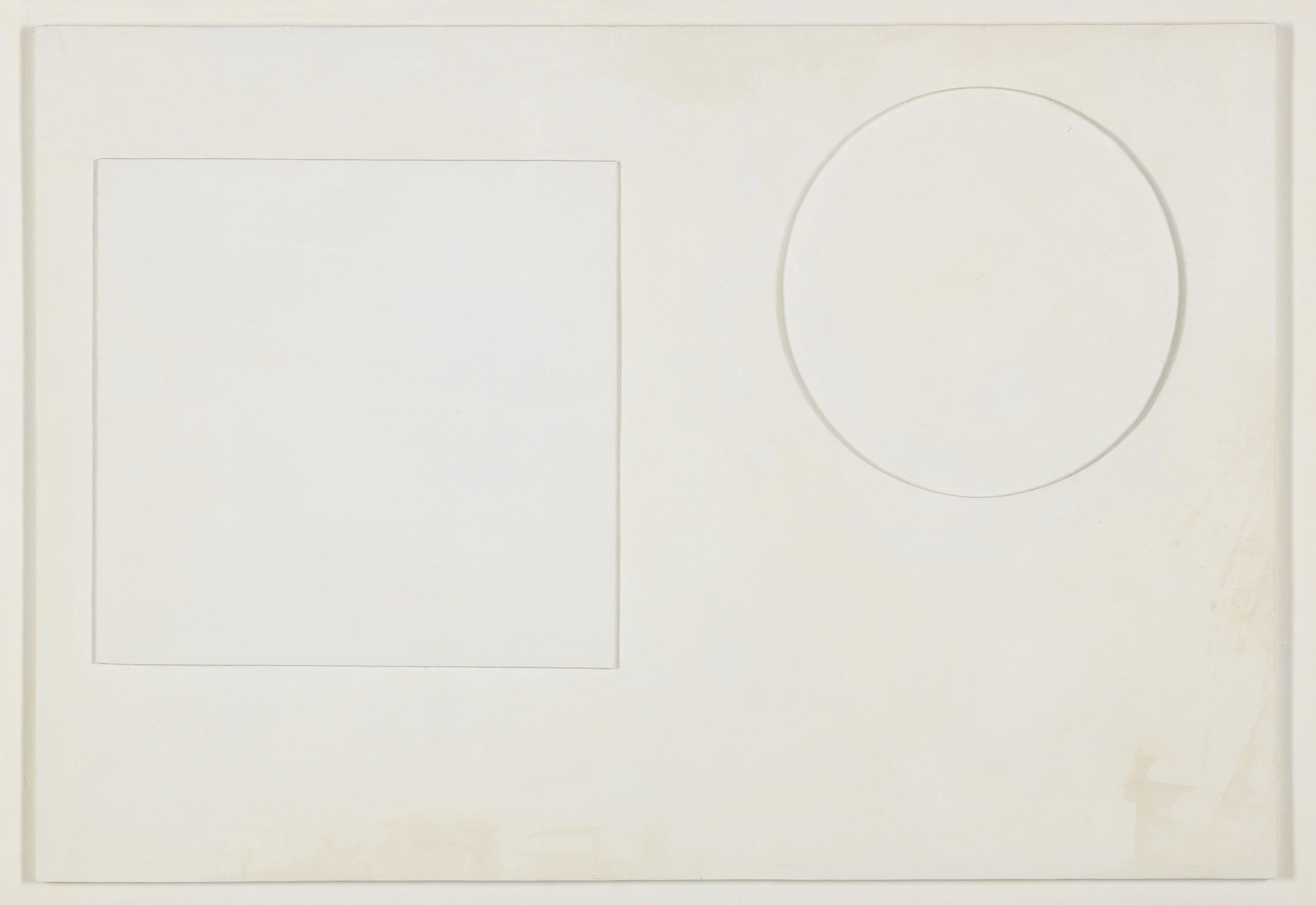
Lansdowne Relief (AD 120-138)
Dark grey limestone
This carving technique illustrates a low-relief carving. Many of these artefacts from ancient Greece and Rome were cleaned to their bare stone, but evidence shows that many of these ‘white’ objects were originally painted, often in bright colours.
The light and shadow create the sense of depth in these. How has Ben Nicholson used this idea in his artwork ‘White Relief’?
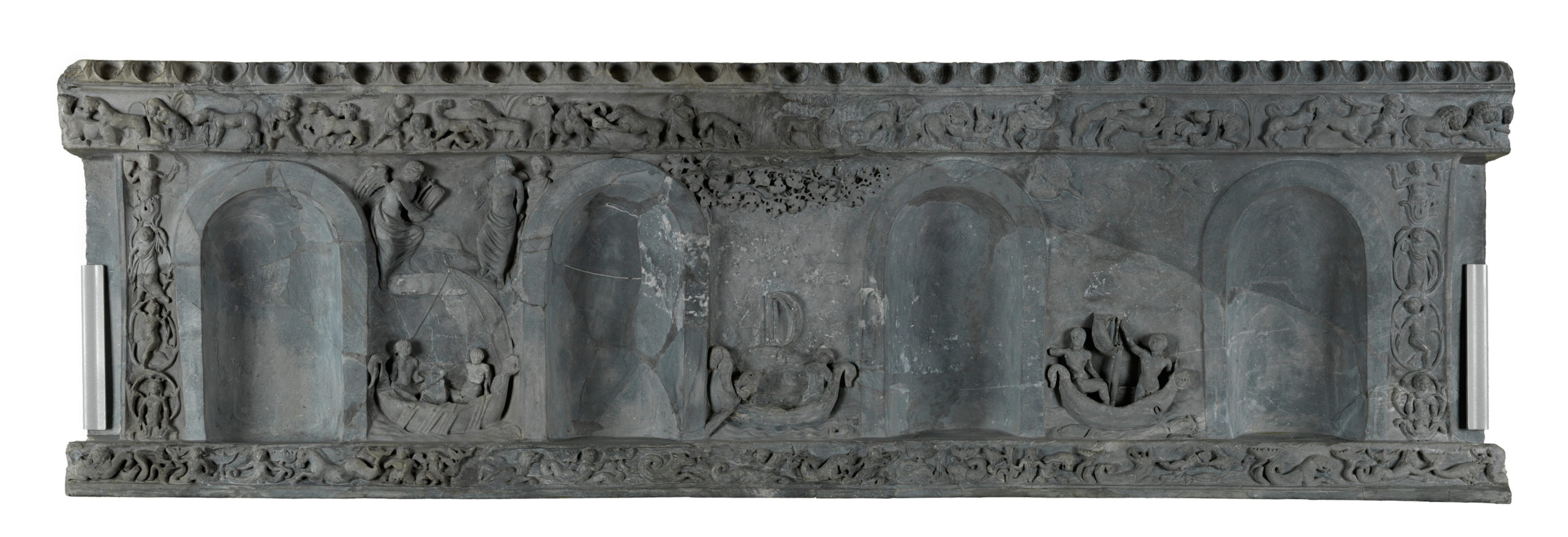
Merete Rasmussen, ‘Blue Twisted Form’
Hand-built stoneware sculpture coated in blue slip
The spaces created by the twists in Rasmussen’s sculpture invite us to move around her artwork to see how it changes. Do you think this piece is decorative or functional?
Making ceramics, such as working in clay, is a very ancient technique and here the artist has literally ‘stretched’ her clay material to its limits.
Compare ‘Blue Twisted Form’ to a Wedgwood or Delftware vase.
Image © Merete Rasmussen; image © The Fitzwilliam Museum, Cambridge

Delftware flower vase with spouts
Tin-glazed earthenware
Dutch Delftware was most popular between 1640 and 1740. It was manufactured to satisfy the European market which had become familiar with Chinese porcelain ware. Original Chinese pieces were expensive and difficult to acquire, so instead people enjoyed this Dutch ceramic in a Chinese style. The odd ‘tubes’ at the top of the pot are for individual flower stems to show off expensive and rare flowers, such as tulips. This would not have been thought of as ‘abstract’ when it was made, but as a functional decorative object. However, the maker combined abstract shapes, forms, lines and colours to create an overall visual impact.
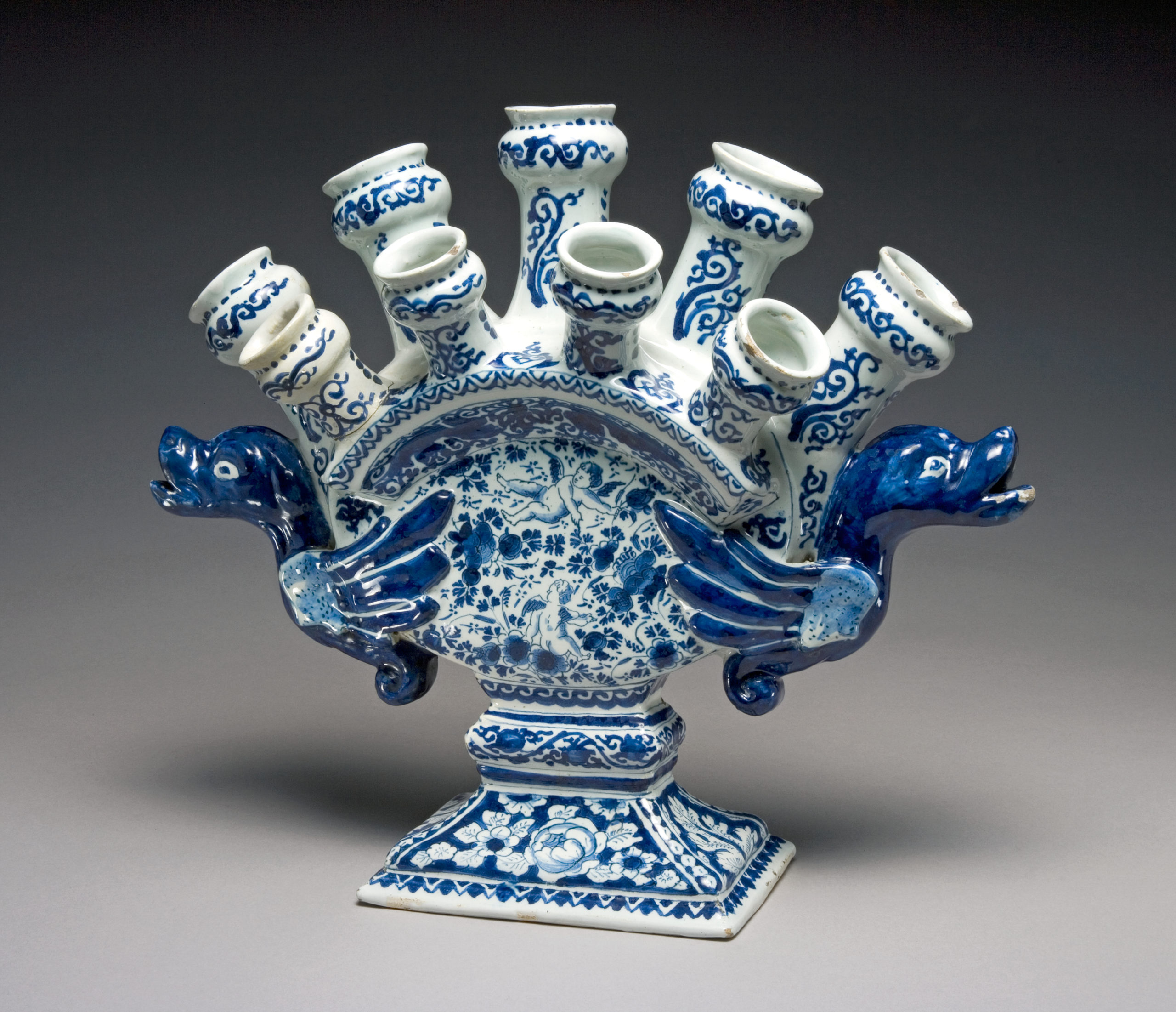
What is the difference between a sculpture and a painting or drawing?
Dimensionality, but how much volume, or how many different planes (directions), make an object 3D? Experiment: try making a collage from corrugated card – you can find this in most brown cardboard boxes. Think about scale and line, form and volume and as an additional challenge, the collage should be no thicker than 3cm when assembled.
Discuss which materials and techniques you would use to create your own sculptures.
In this video, artist Susie Olczak shows you how to make your own sculptural assemblage using recycled materials:
Scale: try taking photographs of your sculptures made as part of Susie Olczak’s virtual workshop and put them in different locations to photograph. You could experiment with your work in a design app to put your work in front of the Fitzwilliam Museum to create a sculpture exhibition.
Permanence: sculpture doesn’t have to be permanent. It could be made for a limited time, then taken to pieces. It could be made from materials that disintegrate or change over time. Try making a sculpture from food, such as sweets (see Jeff Koons), or materials found in the garden, such as leaves and flowers (see Andy Goldsworthy). It could be an installation of work in an existing space or it could be to change an existing work, for instance by cloaking it in different cloth, plastics, or even lights.
Reflect on the successes of your chosen art materials, of the techniques you used and of the creative content of your own artwork. You could create a set of diagrams – think about where these materials come from and how they are transformed into sculpture.
Materials have ‘properties’ and beyond these property capabilities the structural strengths may be weakened.
- How could you ‘stretch’ a material to its limits?
- How could you perhaps change the nature of an object by choosing to represent it in an ‘opposite’ material?
Create a sculptural 3D timeline and place your chosen sculptures from the Fitzwilliam Museum in time order. You might like to think about the art genres these are grouped into.
Download our Abstraction: Sculpture scheme of work as a PDF.
This resource has been designed for teaching within your classroom and not to be used for any other purposes without the express permission of the Fitzwilliam Museum.
Some of the artists featured are in copyright and have been included with the permission of the relevant rights holders.
The copyright in all the images remains the property of The Fitzwilliam Museum, University of Cambridge.
